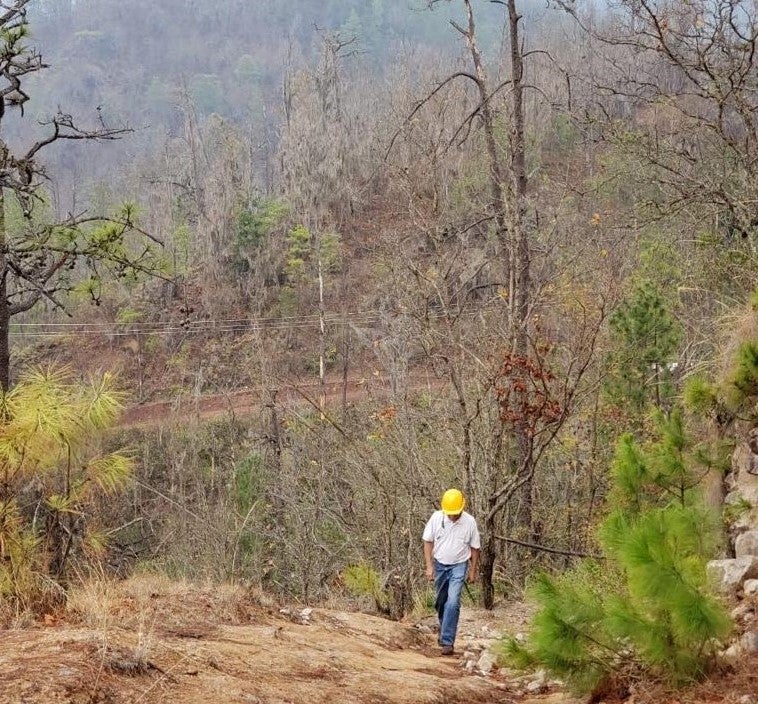Between 2011 and 2015, Honduras suffered one of the most severe periods of drought, caused by the El Niño phenomenon, an event considered abnormal given that it did not usually occur for several consecutive years.
In addition to the water shortage crisis, the drought caused the appearance of a severe plague of pine weevil (Dendroctonus frontalis), a beetle that naturally develops permanently in pine forests, but which can increase their populations by up to level considered pest when there are high temperatures and water stress in the trees. This pest caused the death of 500,000 hectares of pine forest (20% of the Honduran pine forest), equivalent to the amount of forest that would have been lost in Honduras in 100 years due to the annual replacement of forest to crops or urban areas.
This insect attacks the tissues that lead the water and food of the tree causing its death. A good part of these pine forests are located in the areas where water is captured for the consumption of most of the Honduran population, including important cities such as Tegucigalpa, Comayagua and Danlí, as well as for important irrigation areas and hydroelectric dams. Therefore, the loss of these forests represents a high risk for the current and future water supply in this region of Honduras. A few months ago, the country had an episode of water crisis with severe rationing, showing the challenges to face in the future.
This small beetle, which measures less than 5 mm, has a huge influence on the availability of water in the country. The phenomenon of the pine weevil pest has occurred severely every 40 or 50 years for thousands of years, however, with the increase in temperature and the decrease in precipitation that climate change is producing, it is predicted that these Pests will occur more frequently. Therefore, it is essential to establish measures to reduce the impact that the weevil may continue to generate in the Honduran pine forests (and in other countries of Central America).
Honduras is considered one of the most vulnerable countries to climate change and is located together with other countries of Central America in one of the regions considered hot spot of vulnerability to this phenomenon. During the last 30 years, according to ECLAC, it has suffered losses of more than USD 5.7 billion due to extreme weather events. Despite this critical scenario, all is not lost. It is possible to implement actions that make pine forests more resilient against the attack of this pest to prevent new massive pests from occurring in the future.
Some of the actions to consider are: recovering the forests that were attacked with fire control measures; natural regeneration management; promotion of stronger forests through thinning (elimination of excess trees or diseased trees to improve the growth and health of the rest) and other practices that reduce competition between them. In addition, it is necessary to help forest areas achieve a process of transition to a more diverse species.
In parallel, through the implementation of agroforestry systems (crops and trees), soil protection can be helped with greater tree cover in areas that have already changed their use and where basic grains, coffee, crops are carried out, among others. In addition, the pest alert and forest health system in Honduras should be strengthened so that interventions can be carried out in a timely manner in the face of new pests.
All these actions are those that are proposed in the initiative that the Government of Honduras, with the support of the IDB, presented to the Green Climate Fund and for which USD 35 million financing was approved. For this initiative, the IDB additionally contributes another USD 25 million through a loan that is being implemented (HO-L1179) and USD 1.5 million non-refundable (HO-T1347).
With these resources, some 270,000 hectares of forest and agroforestry systems will be supported to be more resilient to climate change and the risk of severe attacks by pests such as the pine weevil, benefiting 450,000 people in the central area of Honduras; one of the main actions proposed by Honduras in its Nationally Determined Contribution (NDC).
Photo: Ana R. Ríos


Leave a Reply